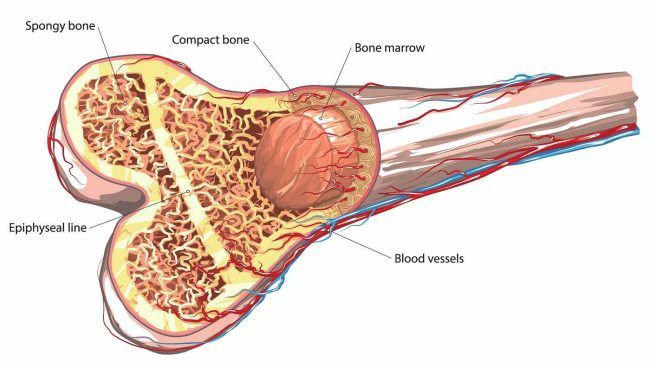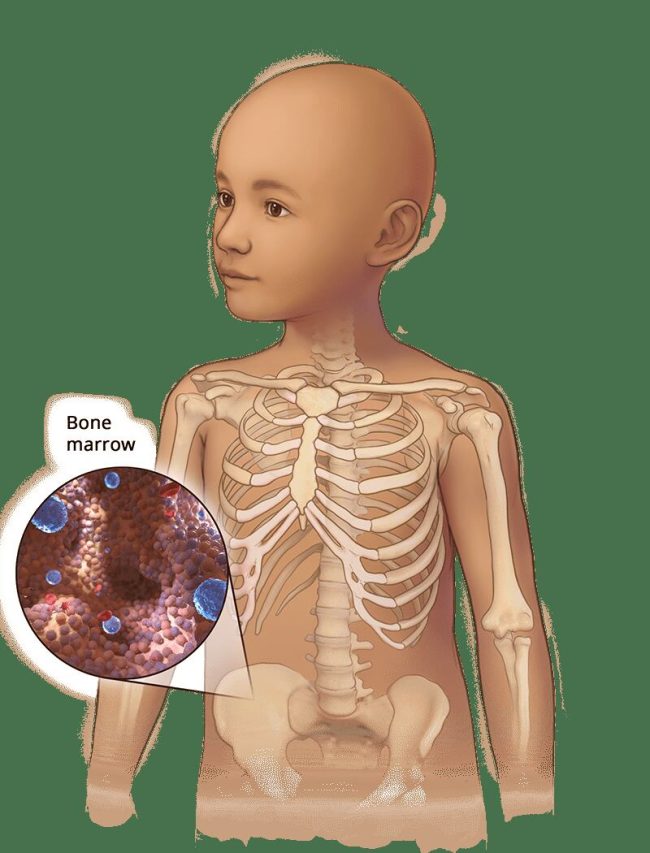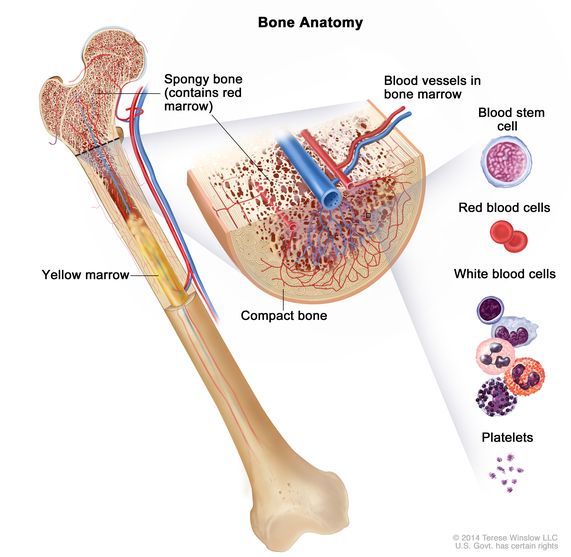Bone Marrow Cancer: Types, Symptoms, and Treatment

Cancer that forms in the blood-forming stem cells of the bone marrow (soft sponge-like tissue in the center of most bones). Bone marrow cancer includes leukemias and multiple myeloma. Abnormal plasma cells accumulate in the bone marrow, forming tumors in bones and leading to weakened bones, anemia, and kidney problems. Symptoms of leukemia can include fatigue, frequent infections, easy bruising or bleeding, fever, weight loss, and swollen lymph nodes.
Abnormal changes in DNA can trigger the development of cancer cells in the bone marrow. High levels of radiation, such as from radiation therapy or nuclear accidents, can increase the risk of bone marrow cancer. Prolonged exposure to certain chemicals, such as benzene, has been linked to an increased risk of leukemia. A family history of blood cancers can elevate the risk diagnosis.

Bone marrow cancer is typically diagnosed through a combination of:
Blood Tests: To detect abnormal levels of blood cells.
Bone Marrow Biopsy: To examine the bone marrow tissue for cancer cells.
Chemotherapy: The use of drugs to kill cancer cells or stop their growth.
Radiation Therapy: High-energy radiation is used to target and destroy cancer cells.
Stem Cell Transplant: Replacing diseased bone marrow with healthy stem cells, either from the patient (autologous) or a donor (allogeneic).
Targeted Therapy: Drugs designed to target specific cancer cells without affecting normal cells.
Immunotherapy: Boosting the immune system to recognize and attack cancer cells.

Bone marrow cancer is a complex disease with a significant impact on patients and their families. Understanding the types, symptoms, and treatment options is essential for early detection and effective management. Ongoing research offers hope for better treatments and improved survival rates in the future.

